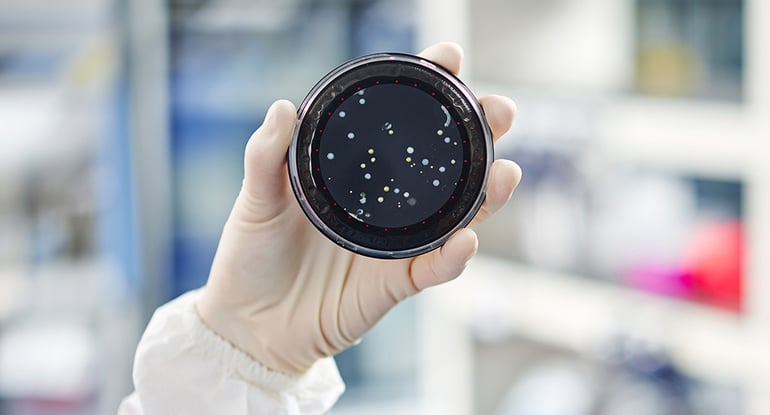blog
December 4, 2019 | Source: Rapid Micro Biosystems, Inc.
Benefits and Strategies for Automating Growth-Based Microbial Detection
POSTED BY Rapid Micro Biosystems | 3 minute read
December 4, 2019 | Source: Rapid Micro Biosystems, Inc.
POSTED BY Rapid Micro Biosystems | 3 minute read
Quality control departments are realizing faster time to results (TTR) from growth-based detection technologies that automate the traditional compendial method and do not require reagents or unique sample preparation techniques. This post explains how these methods work and strategies microbiology and QC teams can use to get the most from them.
How Growth-Based Automation Works
Moving from the traditional test method to a rapid method offers an opportunity to revisit the current incubation strategy with an eye to achieving results more efficiently and effectively than traditional methods. Automated technologies provide unique insight into the growth characteristics of natural flora, which enables a better rationale for the selection of the final incubation strategy. Using data as part of the validation process, a serial incubation strategy could potentially be eliminated for a single temperature option that can deliver accurate results up to four days earlier and only requires a single incubator.

Strategies in Growth-Based Automation
Molds, spores and other microbes grow at wildly varying rates and thrive in different temperatures. Selecting the correct incubation parameters is critical for microbiologists looking to thoroughly detect their products' microbial burdens. Regulatory guidelines offer a range of best practice incubation strategies:
To learn more about how growth-based RMM can speed up your microbiological tests, check out this resource on non-destructive enumeration.
If you have questions about automating Microbial Contamination Detection contact us directly to learn more about our Growth Direct™ system.